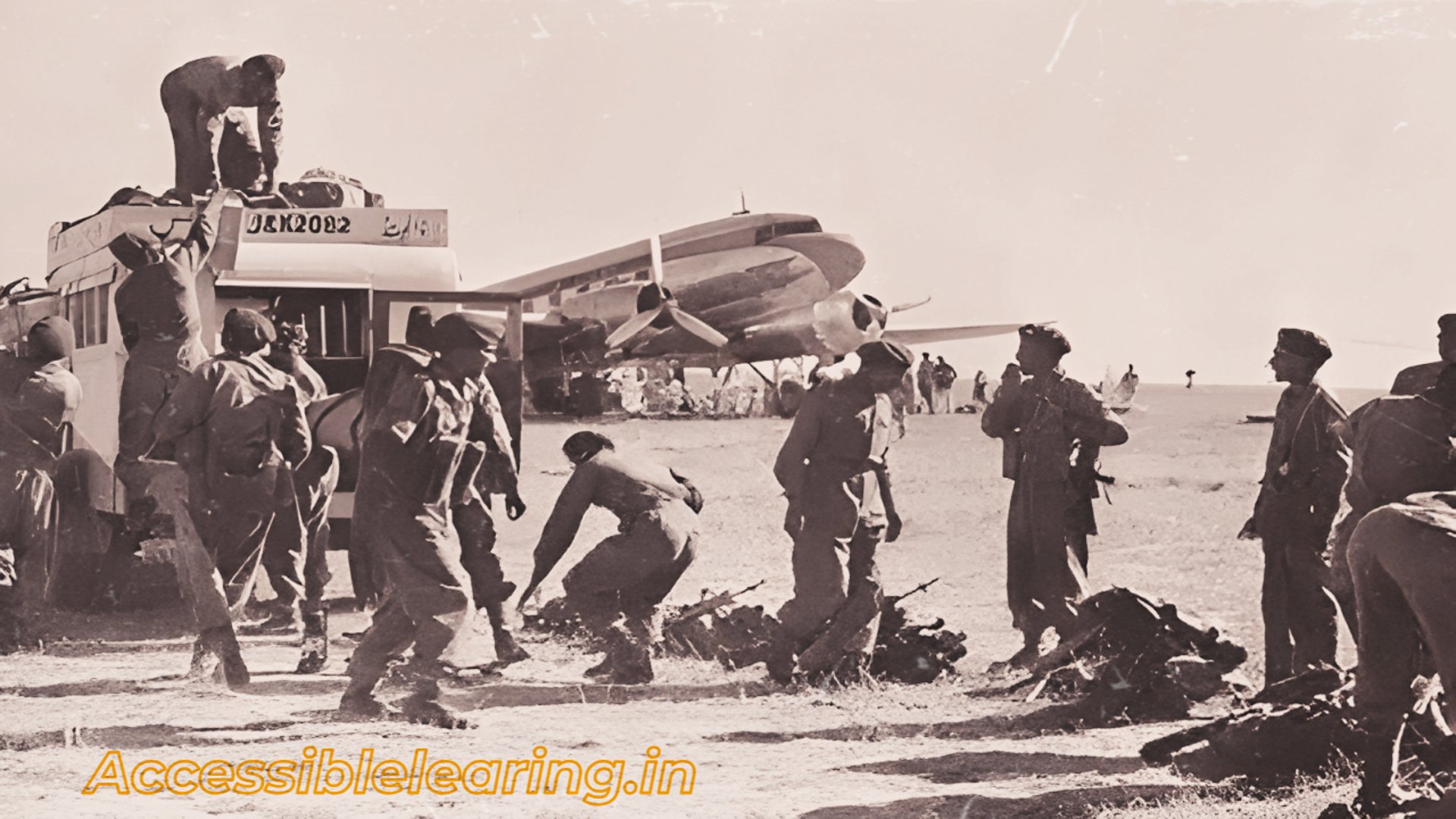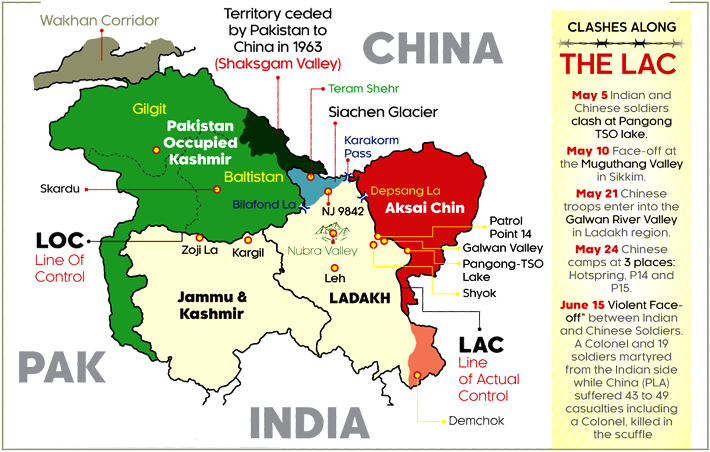
Kashmir: A Journey from Maharaja Hari Singh to the Disputed Terrains
The integration of Jammu and Kashmir into India, the ongoing existence of Pakistan-administered Kashmir (PoK), and China's territorial claims over Aksai Chin have all played significant roles in shaping the intricate geopolitical scenario of the region.
EDUCATION/KNOWLEDGEBIOGRAPHY/HISTORYINDIAN HISTORYEMPIRES/HISTORY
Keshav Jha
3/1/20244 min read


Kashmir’s rich and tumultuous history, spanning from the era of Maharaja Hari Singh to the current geopolitical landscape, is characterized by a series of intricate developments and enduring disputes. The region’s integration into the Indian Union in 1947, along with the persistent presence of Pakistan-Administered Kashmir (PoK) and China's territorial claims in Aksai Chin, have all played significant roles in shaping the complex and often contentious dynamics of the region. These territorial conflicts are further exacerbated by the abrogation of Article 370 in 2019, which conferred special autonomy to Jammu and Kashmir, thus introducing an additional layer of political controversy. Collectively, these elements continue to shape the ongoing narrative of Kashmir, influencing both its internal governance and its significance in global geopolitics.


Maharaja Hari Singh: Legacy and Role in the Integration of Jammu and Kashmir
Maharaja Hari Singh, the last ruling monarch of the princely state of Jammu and Kashmir, remains a pivotal figure in the region's history. His leadership during a time of immense political upheaval and uncertainty in 1947 played a decisive role in shaping the state's future. Amidst mounting internal turmoil and external pressures, particularly from Pakistan, the Maharaja's decision to accede to the newly formed Dominion of India marked a crucial turning point. This momentous decision laid the foundation for Jammu and Kashmir’s eventual integration into the Indian Union.
However, despite this historic move, the integration of Jammu and Kashmir into India was far from simple. The region's complex political and territorial disputes, both within India and with neighboring Pakistan, were not fully resolved, giving rise to long-standing issues that continue to affect the state’s stability and relations with neighboring countries. Maharaja Hari Singh’s legacy, therefore, remains intertwined with both the triumphs and challenges of Jammu and Kashmir's integration, reflecting the broader complexities of post-independence India.
This nuanced legacy continues to influence the ongoing dialogue around the region's political and territorial status, with Maharaja Hari Singh's decision remaining a subject of deep reflection and debate in India's modern history.
Pakistan-Administered Kashmir (PoK): An Ongoing Dispute
Pakistan-administered Kashmir, also known as Azad Kashmir and Gilgit-Baltistan, continues to be a major point of contention between India and Pakistan. Following the partition of British India in 1947, the region became the focal point of multiple conflicts and agreements, leading to the establishment of a de facto border known as the Line of Control (LoC). Despite various efforts to seek a peaceful resolution, the status of PoK remains unresolved. Both India and Pakistan assert sovereignty over the region, keeping the dispute alive and unresolved, further complicating the relationship between the two nations and the future of the Kashmir region.
Aksai Chin: China’s Territorial Claims and the Ongoing Dispute with India
Aksai Chin, a strategically crucial region located in the eastern part of Jammu and Kashmir, has long been a flashpoint in the territorial dispute between India and China. During the 1962 India-China war, China gained control of Aksai Chin, adding a complex layer to the already contentious Kashmir issue. Despite numerous diplomatic talks and efforts to ease tensions, the border dispute over Aksai Chin remains unresolved. Both India and China assert sovereignty over this region, with the disagreement continuing to impact bilateral relations and regional stability. This ongoing territorial conflict over Aksai Chin is a key aspect of the broader Kashmir dispute and a significant factor in South Asian geopolitics.
Article 370: The Special Status of Jammu and Kashmir and its Abrogation
Article 370 of the Indian Constitution provided Jammu and Kashmir with special autonomous status, recognizing it as a unique entity within the Indian Union. This provision allowed the state to have its own constitution, flag, and a significant degree of self-governance. However, in August 2019, the Government of India made a historic move by abrogating Article 370, which effectively revoked Jammu and Kashmir’s special status and reorganized the region into two separate union territories—Jammu and Kashmir and Ladakh.
The abrogation of Article 370 sparked widespread debate and controversy, both domestically and internationally. Supporters of the move argued that it would pave the way for greater integration, economic development, and stability in the region. On the other hand, critics raised concerns over its potential to undermine Kashmiri autonomy and exacerbate tensions in an already volatile region. The change has left a lasting impact on the political landscape of Jammu and Kashmir and continues to fuel discussions around its future within India.
The complexities surrounding Kashmir, shaped by the legacy of Maharaja Hari Singh, territorial disputes over Pakistan-administered Kashmir (PoK) and Aksai Chin, as well as the abrogation of Article 370, highlight the pressing need for a comprehensive and inclusive solution to the Kashmir issue. Addressing the multifaceted challenges of Kashmir’s past, present, and future requires a commitment to dialogue, diplomacy, and peaceful coexistence. Only through sincere efforts to foster reconciliation, mutual understanding, and cooperation between all parties involved can the region hope to achieve lasting peace and stability. The resolution of these longstanding issues will not only benefit the people of Kashmir but also contribute to broader regional harmony in South Asia.
Subscribe to our newsletter
All © Copyright reserved by Accessible-Learning
| Terms & Conditions
Knowledge is power. Learn with Us. 📚


